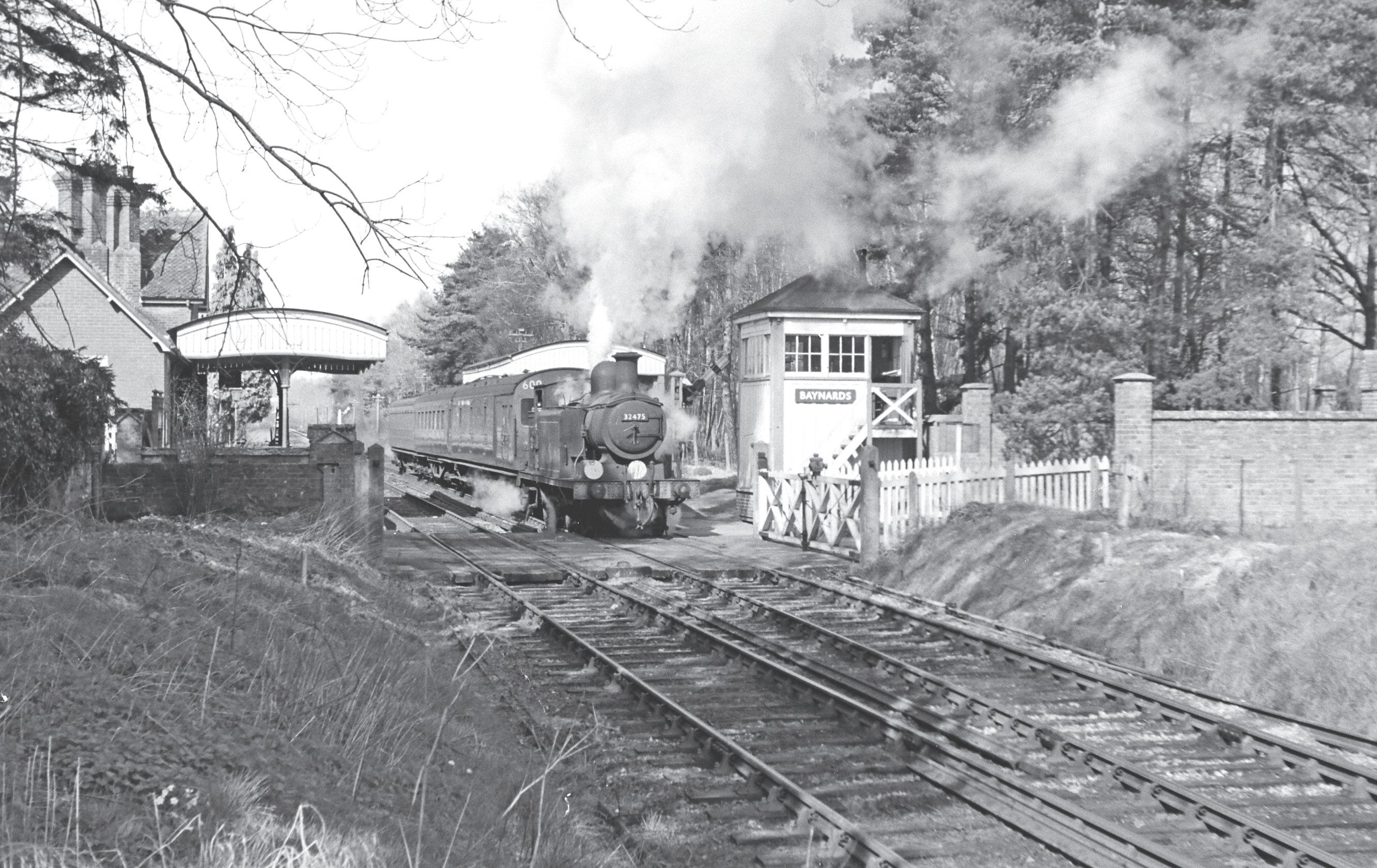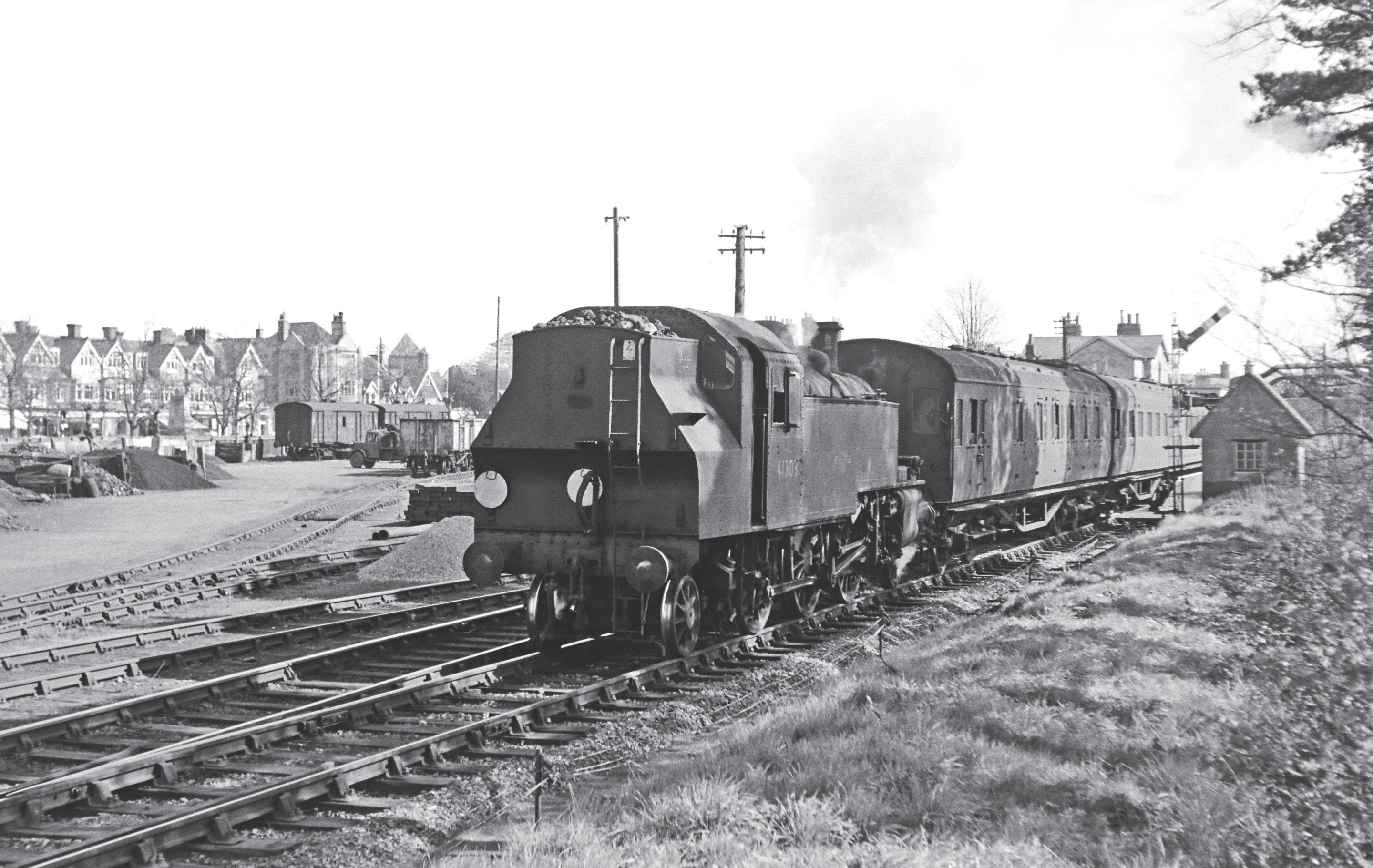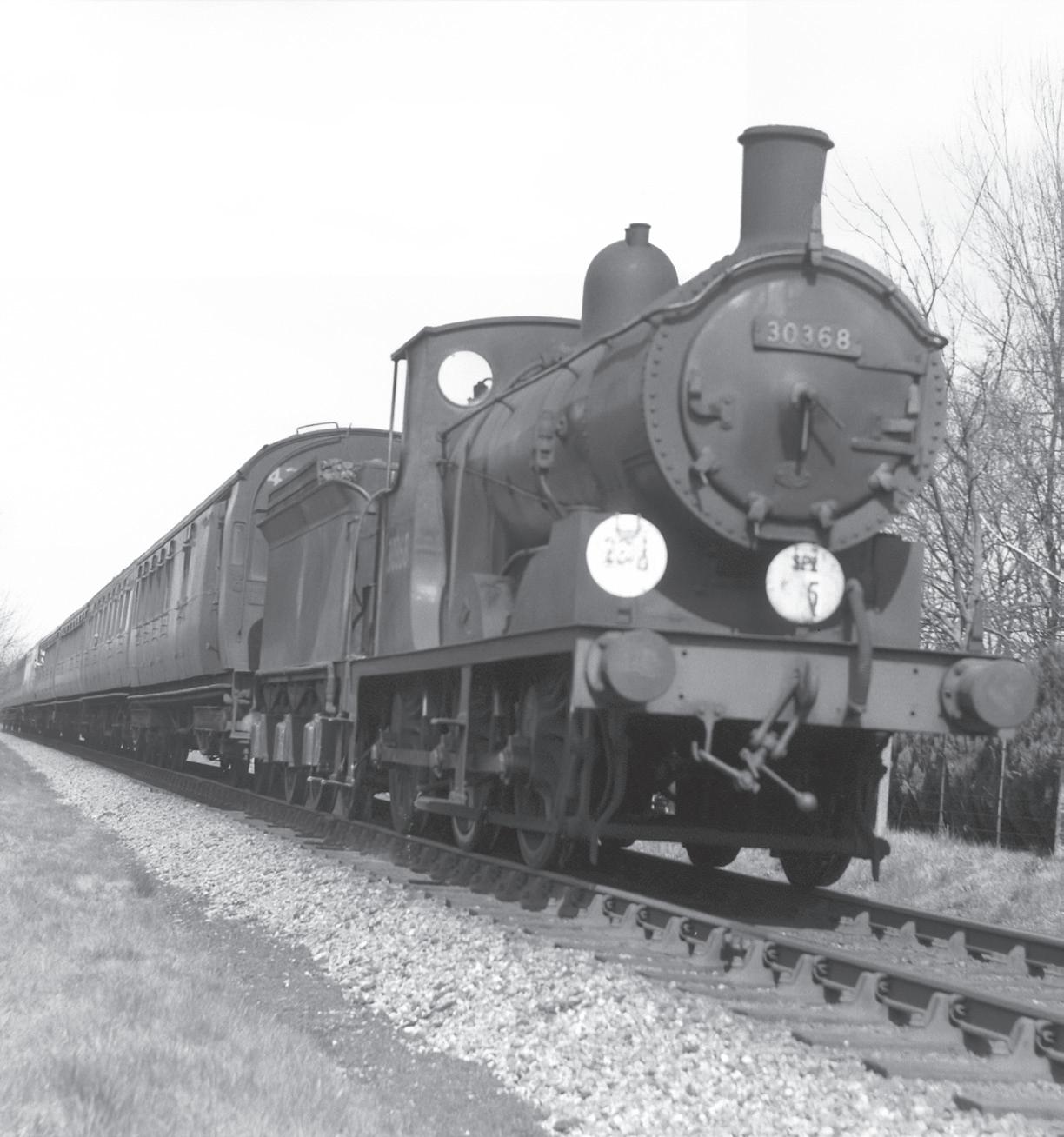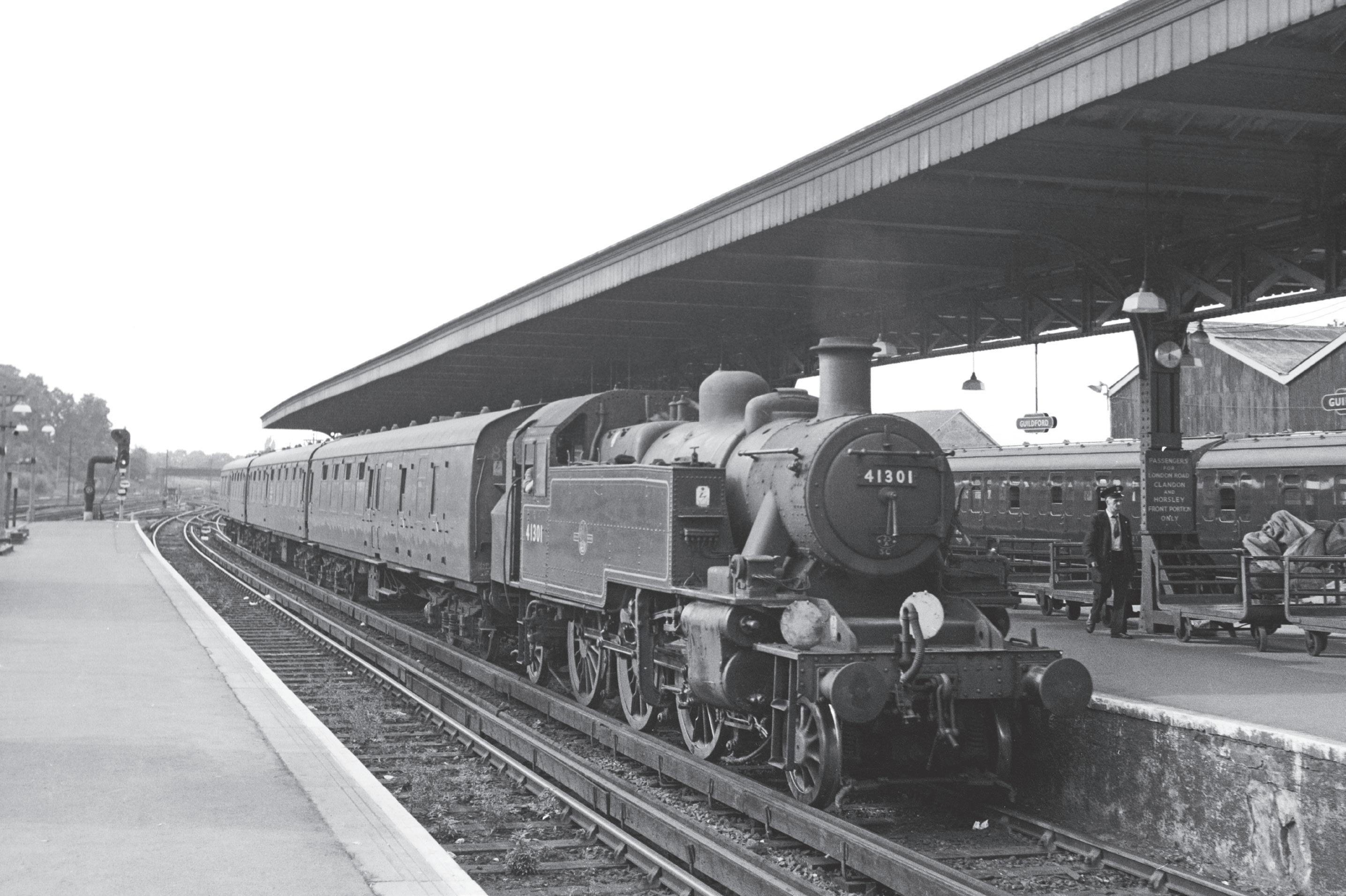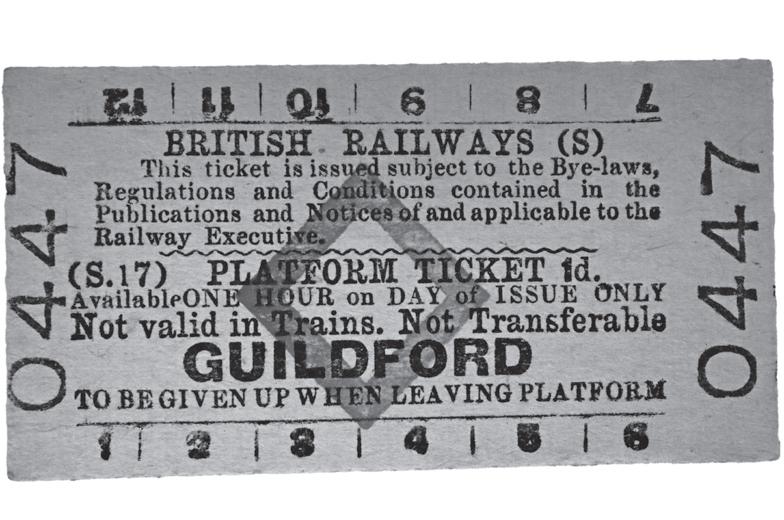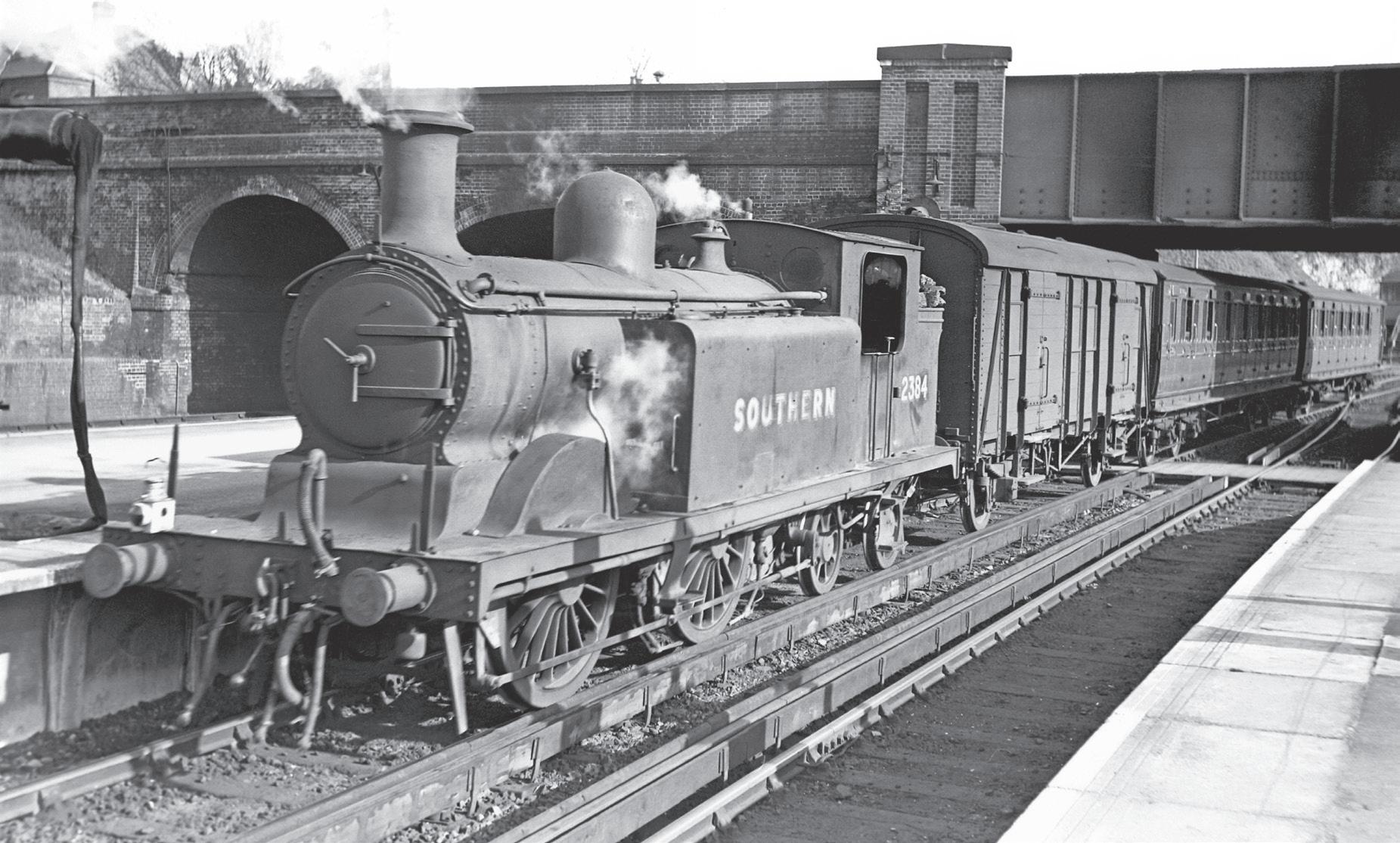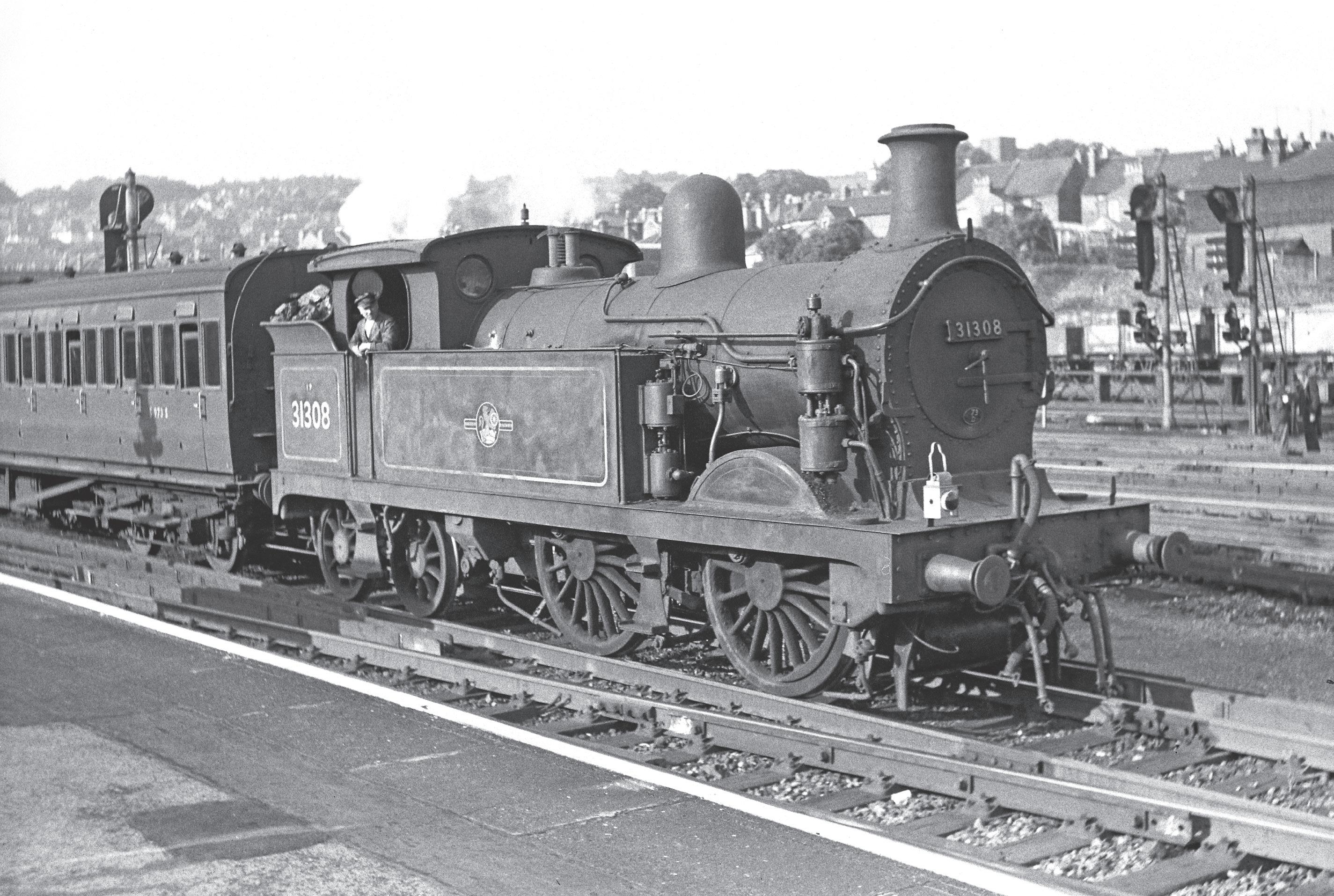FROM THE ADUR TO THE WEY
Volume 2: Horsham - Christ's Hospital - Cranleigh - Guildford
by Jeffery Grayer
Two small children are undoubtedly enjoying their trip behind a steam locomotive which in this case is another member of the H Class of 0-4-4Ts, No. 31276, about to depart for Guildford on 5 September 1959. The coach the children are travelling in, S1081S, is an ex-SECR ‘long ten’ 60 foot ten compartment third built to diagram 52 and dating from 1921. The final examples of these rather austere vehicles were not withdrawn until 1962, being the final pre-Grouping SR non-corridor stock remaining on the mainland of the UK. Two examples are preserved today on the Bluebell Railway where they are known as ‘hundred seaters’ as at a push ten people can be accommodated in each compartment – a requirement seldom, if ever, needed on the Guildford line! (James Harrold)

In this view taken from the Guildford platform the attractive footbridge can be seen as Ivatt tank No. 41303 waits to depart on 24 March 1961, whilst a member of the platform staff chats to the driver. Although the main station building has been rendered, there seems to be a problem with damp under the eaves. (Terry Gough)
Having run round its train No. 41303 sets off back to Guildford on 24 March 1961, affording us a view of the extensive goods yard. Coal staithes are in evidence here and a lorry can be seen backed up to one of the railway trucks to bag up this indispensable means of domestic heating at this time. As with many another country goods yard, this commodity represented the main goods inwards. (Terry Gough)
The relationship of the level crossing gates to the signal box and station is revealed in this image dating from 1965. The W. H. Smith bookstall is also evident and was no doubt well patronised by city gents on their morning commute to London. The station was situated on a pronounced curve with the passing loop being installed in 1876. (Dennis Culum)
Above: On 1 April 1955 Drummond 700 Class No. 30368 was photographed near Bramley. Dating from 1897, this 0-6-0 would last in service until withdrawal at the end of 1962, being part of the drastic cull of pre-Grouping steam then undertaken by the Southern Region. (Peter Hay)
Peasmarsh Junction
Right: Peasmarsh Junction was where the branch met the electrified Portsmouth main line and this view captures the moment on 30 June 1964 when the fireman of Ivatt tank No. 41301 hauling the 6.05pm service from Guildford to Horsham receives the staff from the signalman. The former SE&CR line from Redhill to Reading lies just to the north of this junction and an embankment was constructed to accommodate a spur allowing through running to Portsmouth. However this scheme was abandoned once the L&SWR had acquired the Portsmouth route from its speculative constructor and is shown as “Dismantled” on this map dating from 1920. (Leslie Freeman)
At the north end of the station Ivatt 2-6-2T No. 41301 brings in the stock of the 6.05pm service to Horsham on 30 June 1964. The sign on the right instructs passengers for stations at London Road (Guildford), Clandon and Horsley to occupy the “front portion only” of the EMU at the platform due to the short platforms at these stations. (Leslie Freeman)
With the station clock reading 5.45pm, Ivatt tank No. 41294 has arrived at Guildford on 30 June 1964 with the 4.53pm service from Horsham spot on time. The crew lean out of the cab, taking a well earned breather. (Leslie Freeman)
We turn the clock back a few years for the next selection of images, beginning with this shot of D3 class No. 2384 in Southern livery heading up the 5pm service to Horsham, which it is propelling out of Guildford station under Farnham Road bridge on 14 April 1949. These tanks performed regularly over the branches from Horsham for many years after the Grouping with the last example, No. 32390, not being withdrawn until October 1955. (Peter Pescod)
On 15 July 1959 H Class 0-4-4T No. 31308, which had been reallocated to Brighton shed the previous month, has recently arrived with a service from Horsham. It will shortly return thence, the tail lamp having already been placed in position on the buffer beam. Colour light signals, some examples of which are seen in the background, had been introduced at Guildford as early as 1937. (Peter Pescod)

The line from Horsham to Guildford was always something of a backwater and never lived up to the expectations of the promoters. Hopes of channelling traffic from the Midlands to the South Coast via the link to the Horsham - Shoreham route at Christ's Hospital remained unfulfilled and the branch settled down to an uneventful existence for just short of 100 years closing in 1965. Serving a largely rural community with limited passenger potential trains were infrequent and slow and largely worked by steam until the end. Had it developed into a double track electrified line feeding into a similarly electrified route from Christ's Hospital to Shoreham and the South Coast then things might have turned out very differently. All stations on this bucolic route are featured together with the variety of motive power that graced its tracks.
ISBN 978-1-913893-49-1
£13.50
